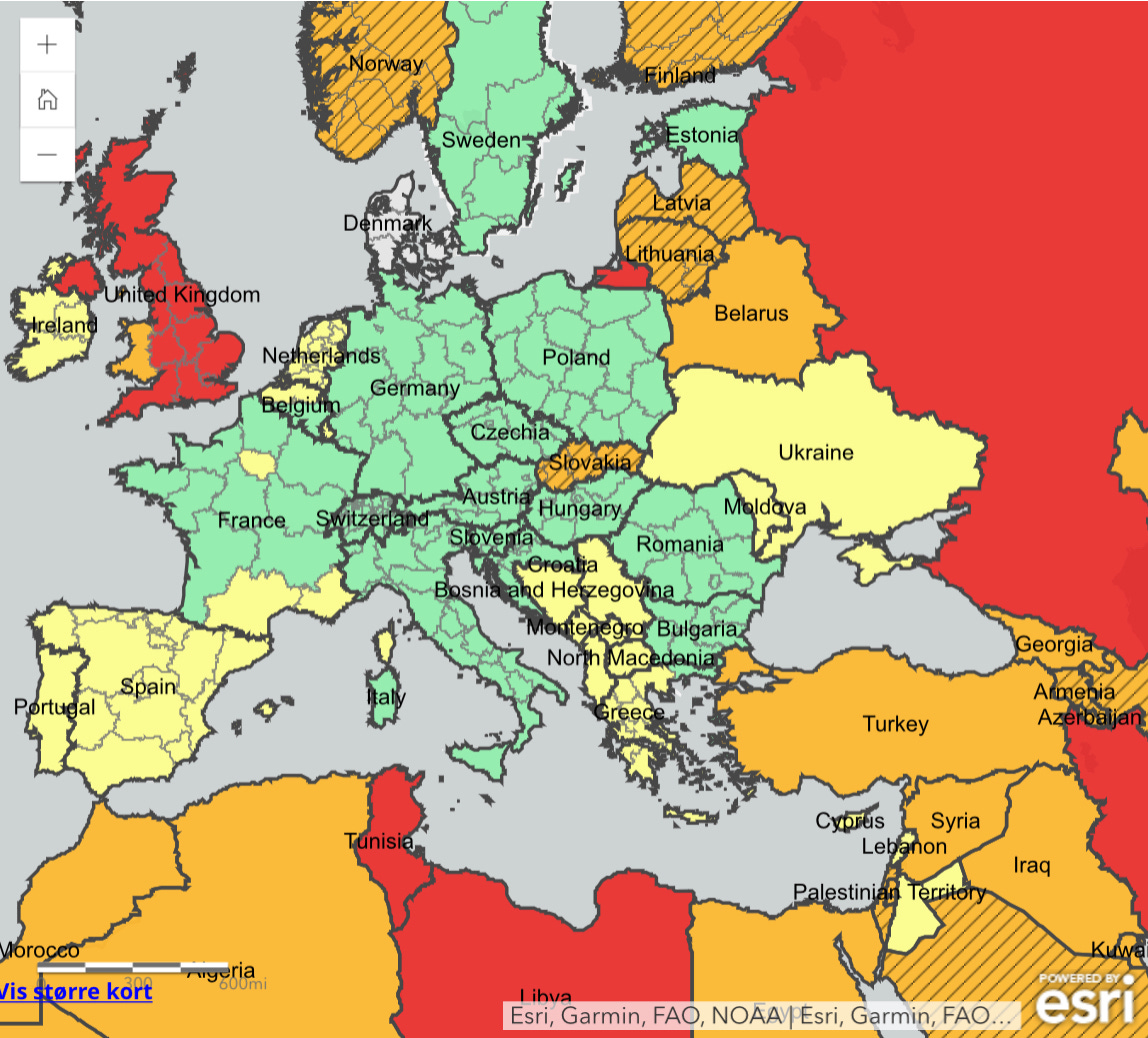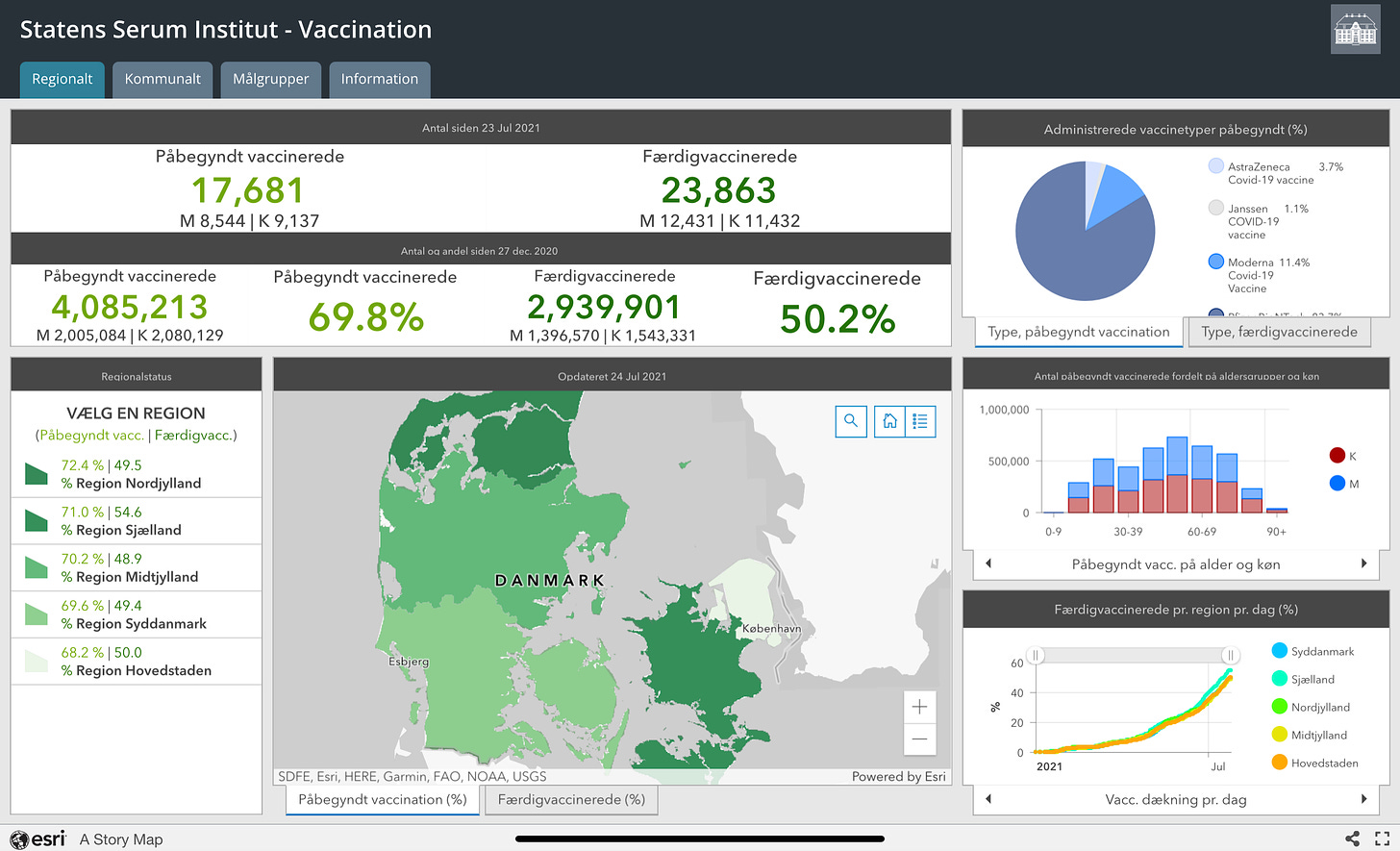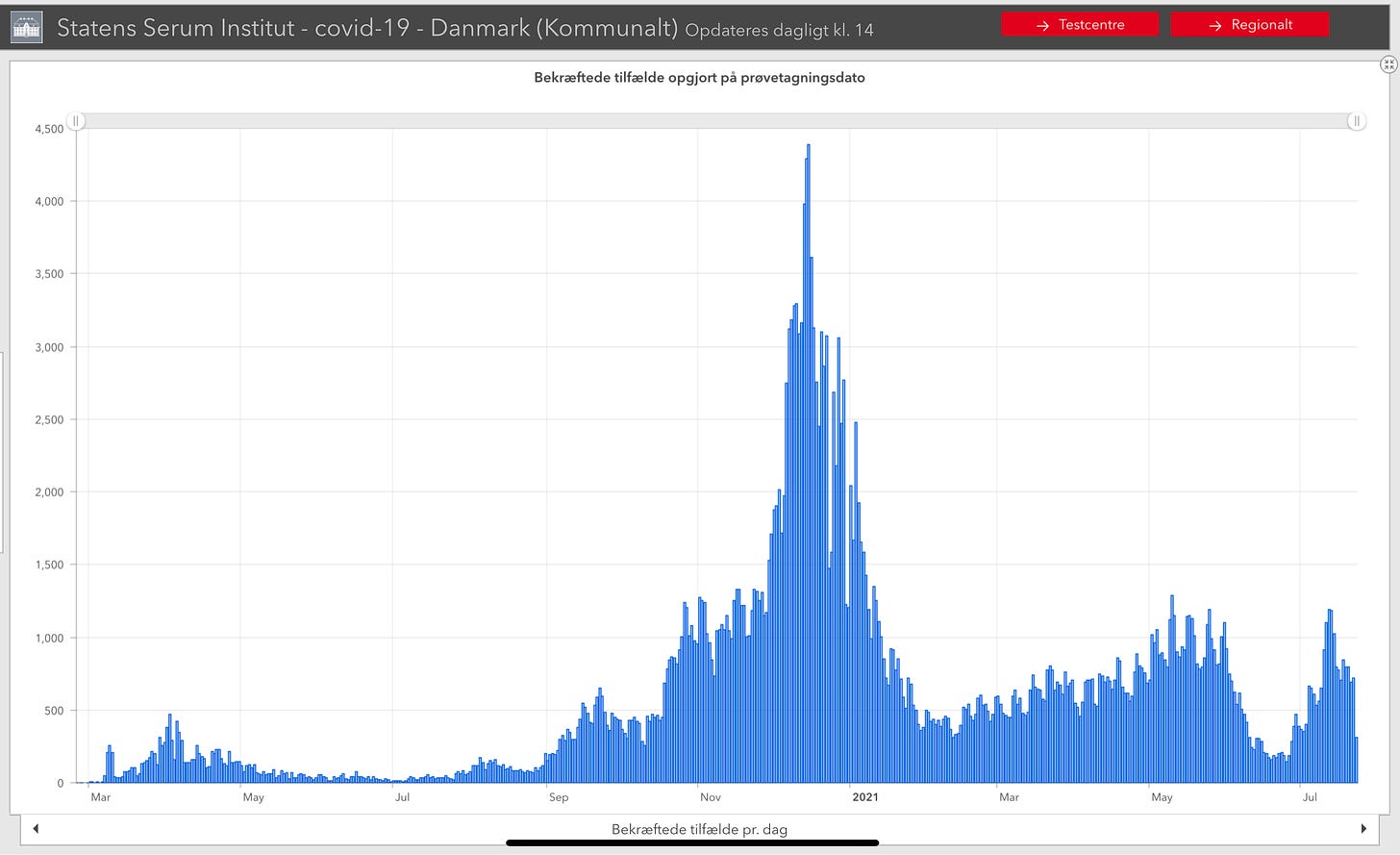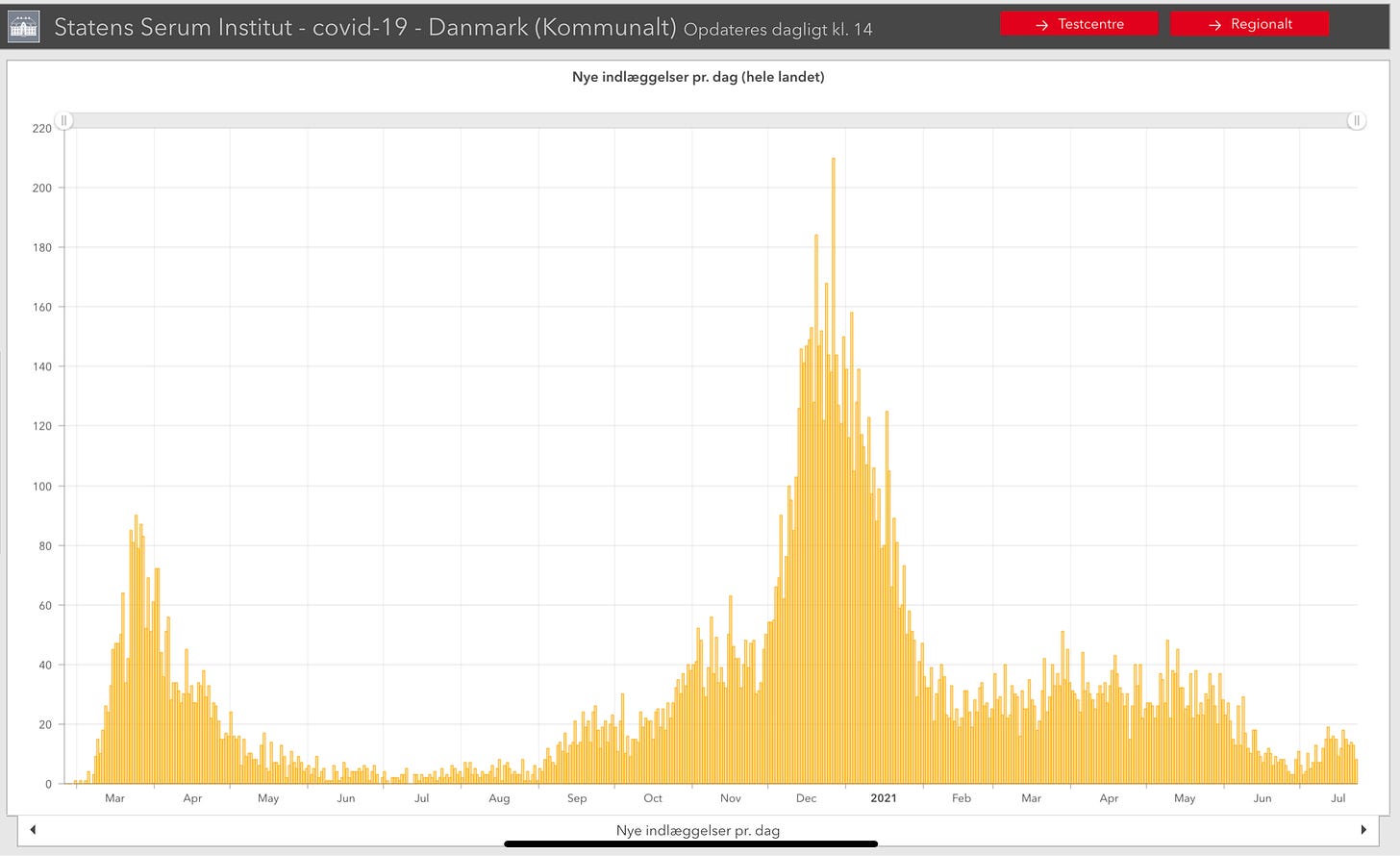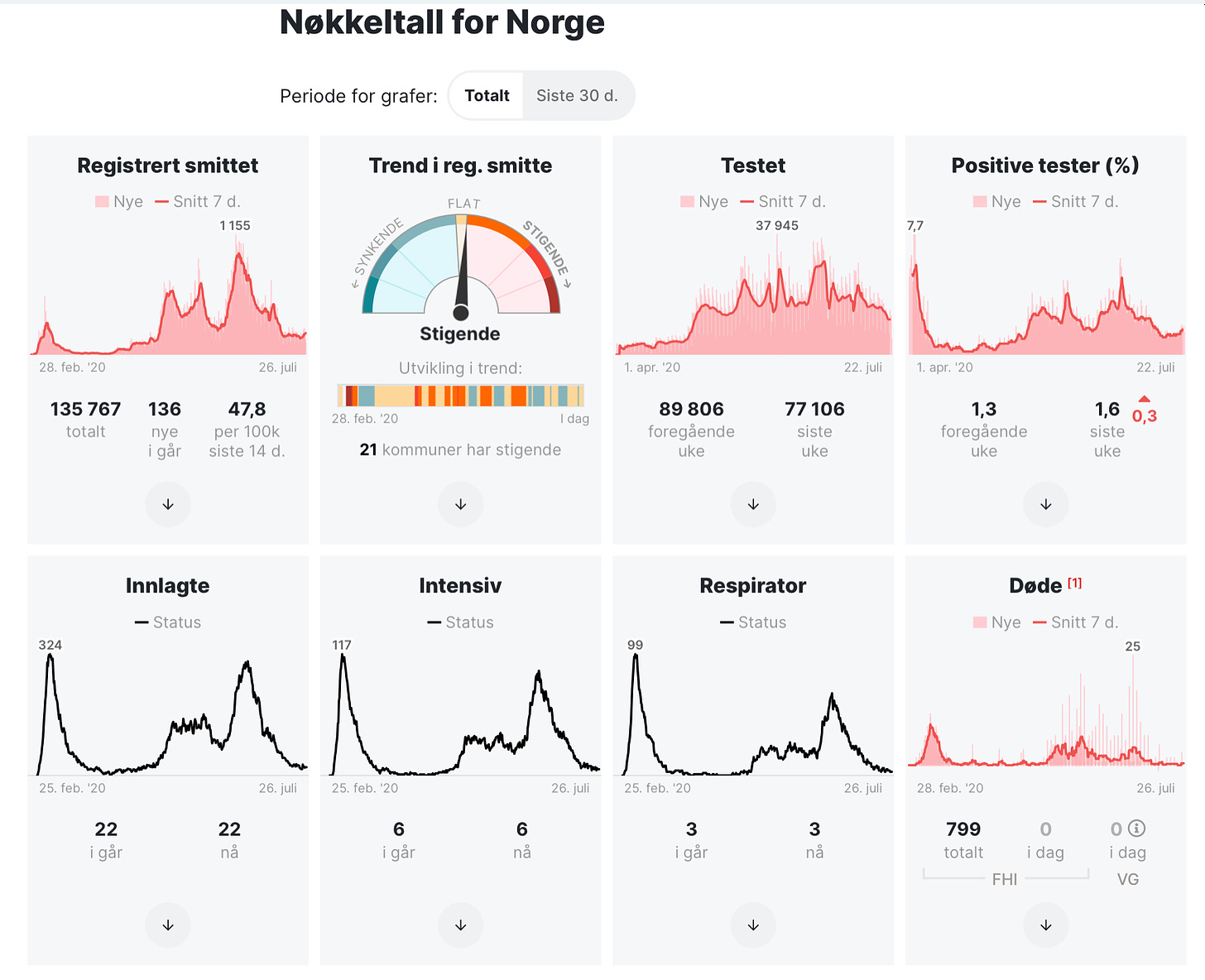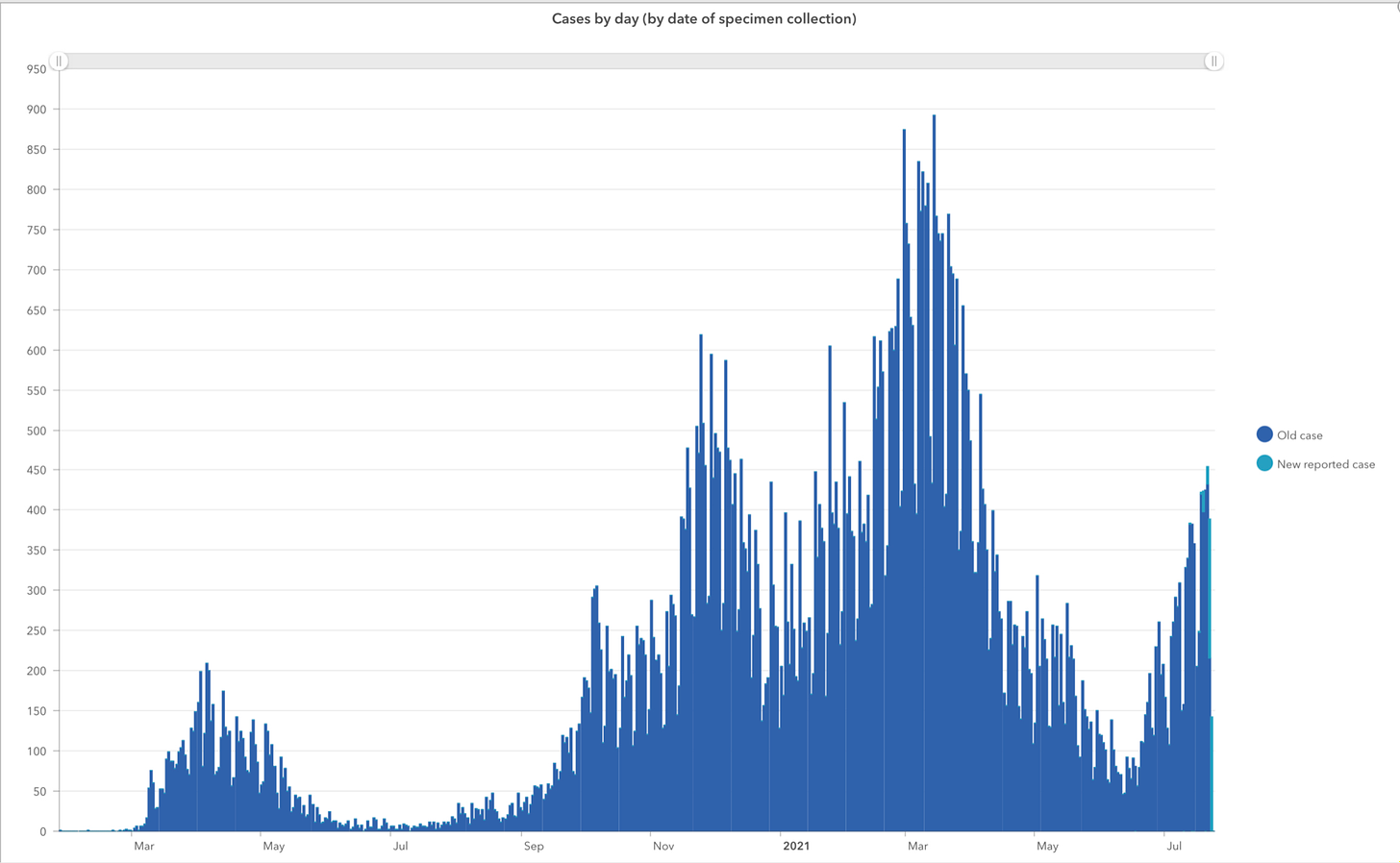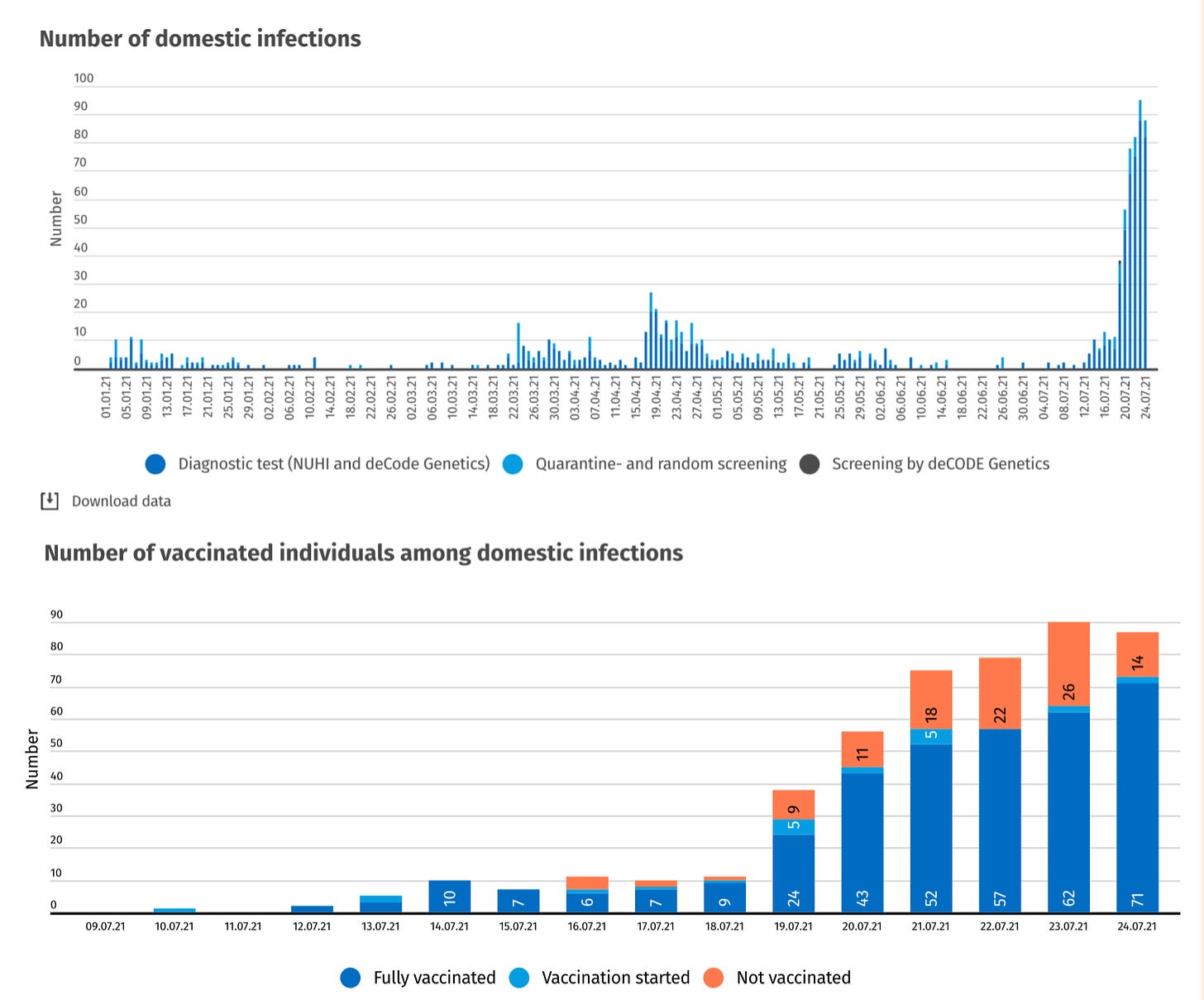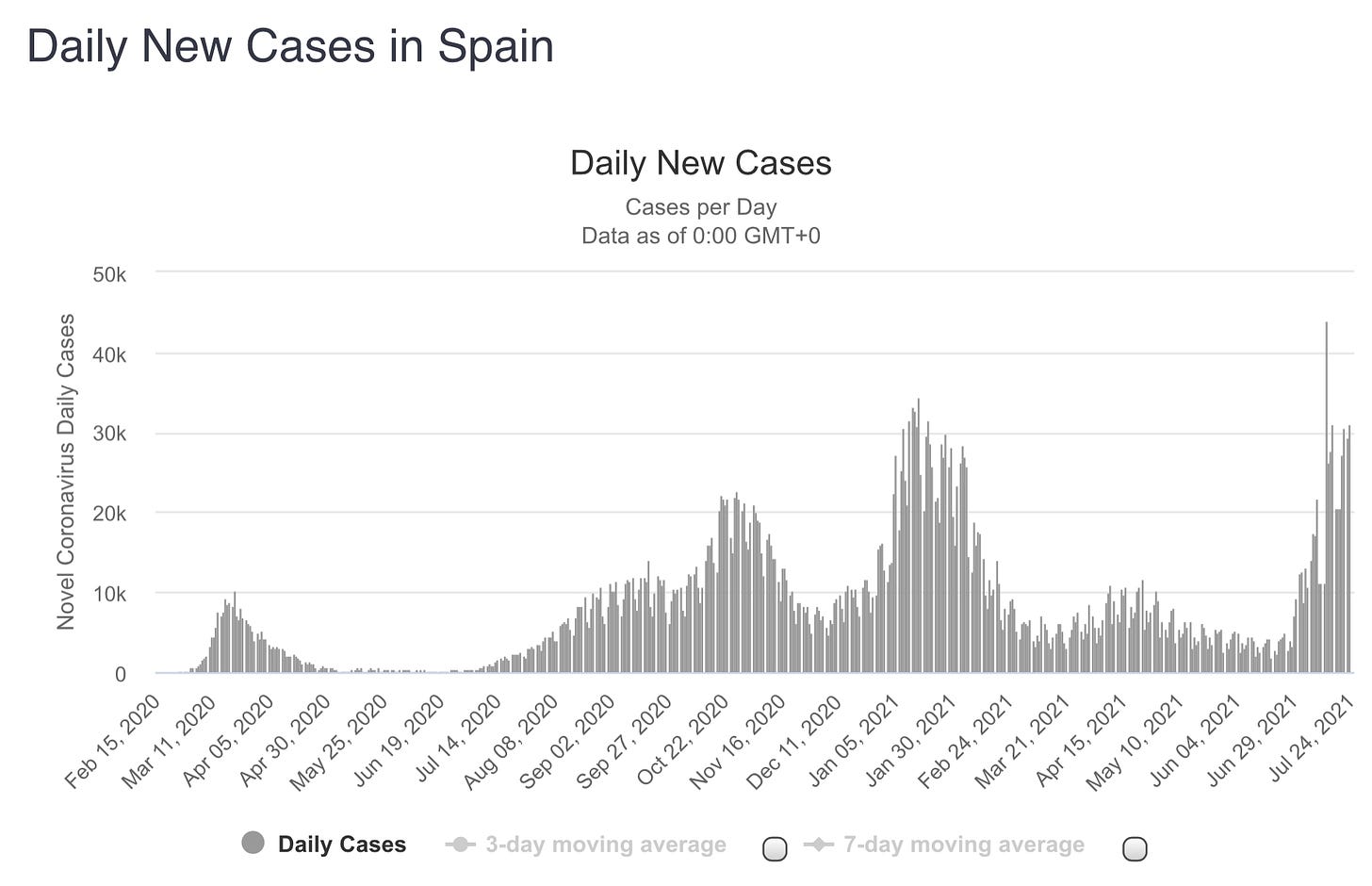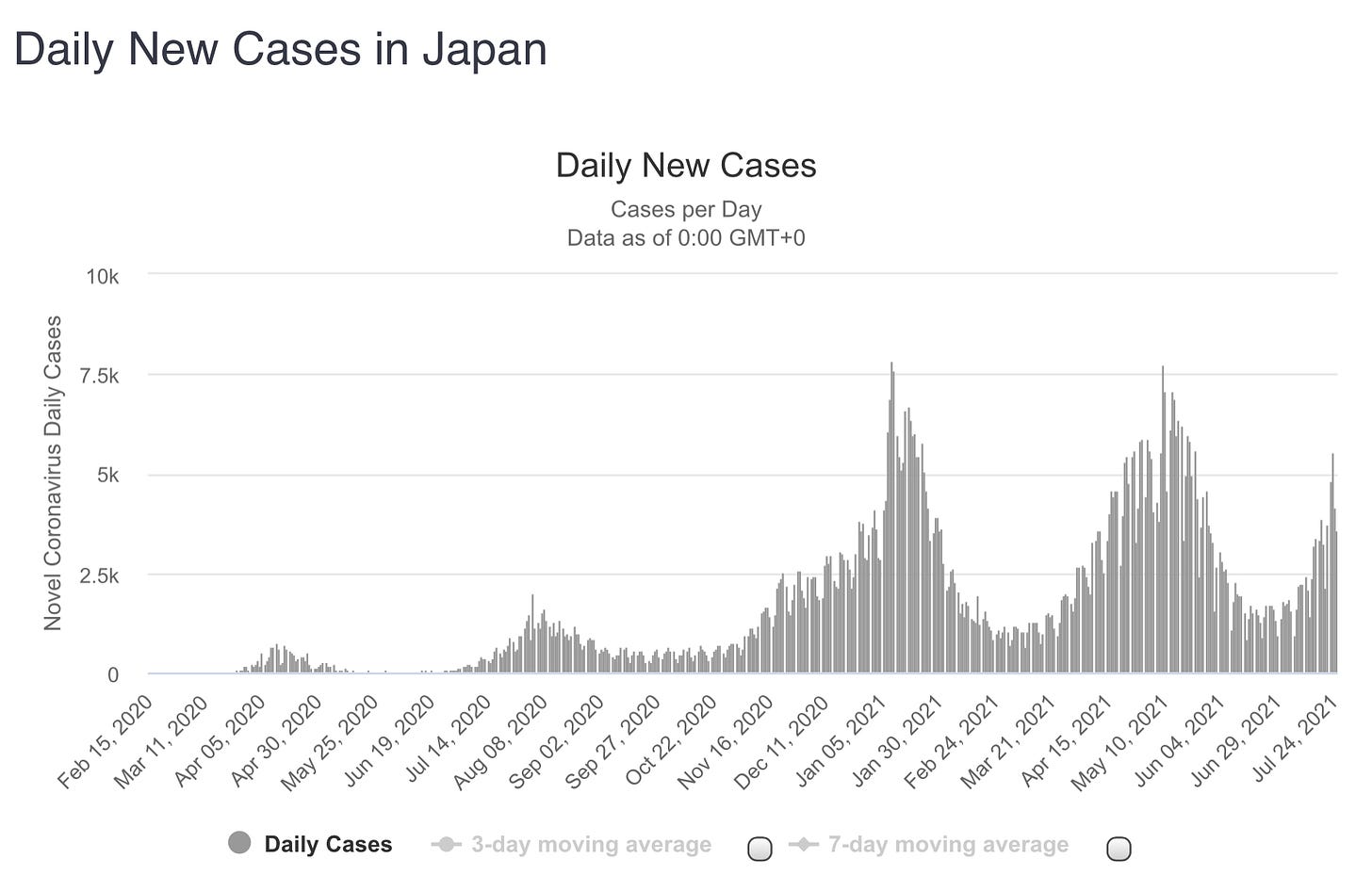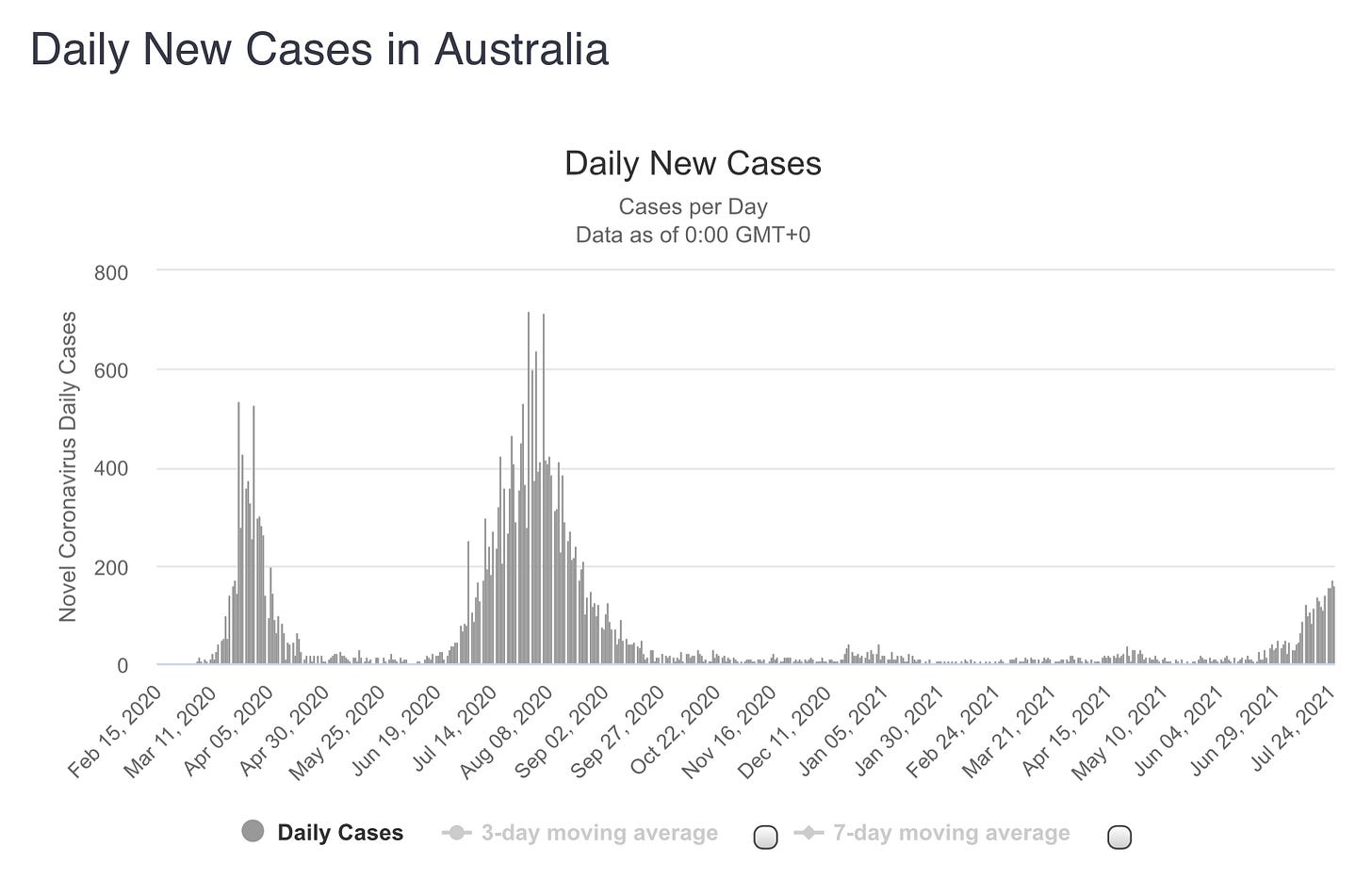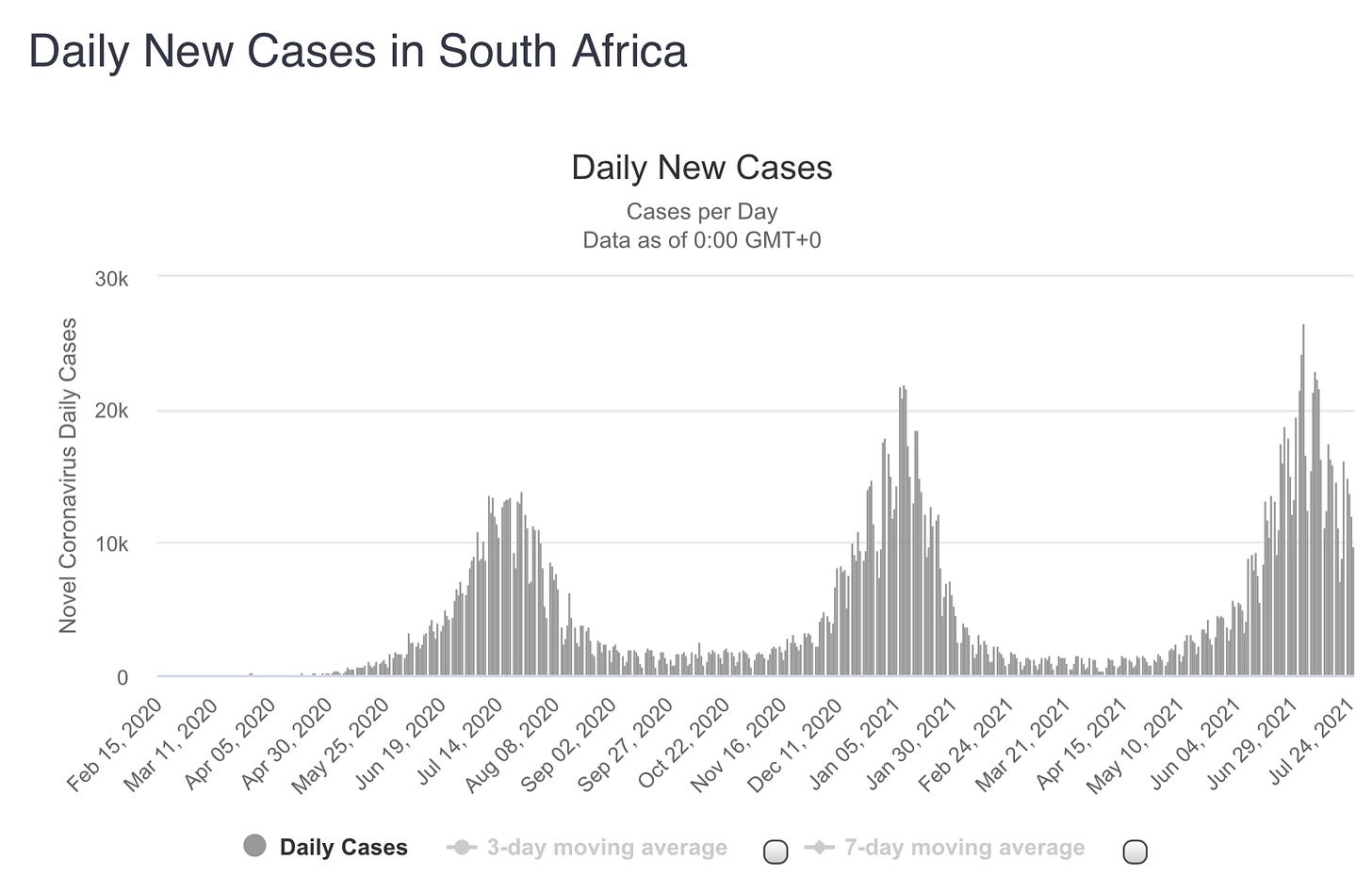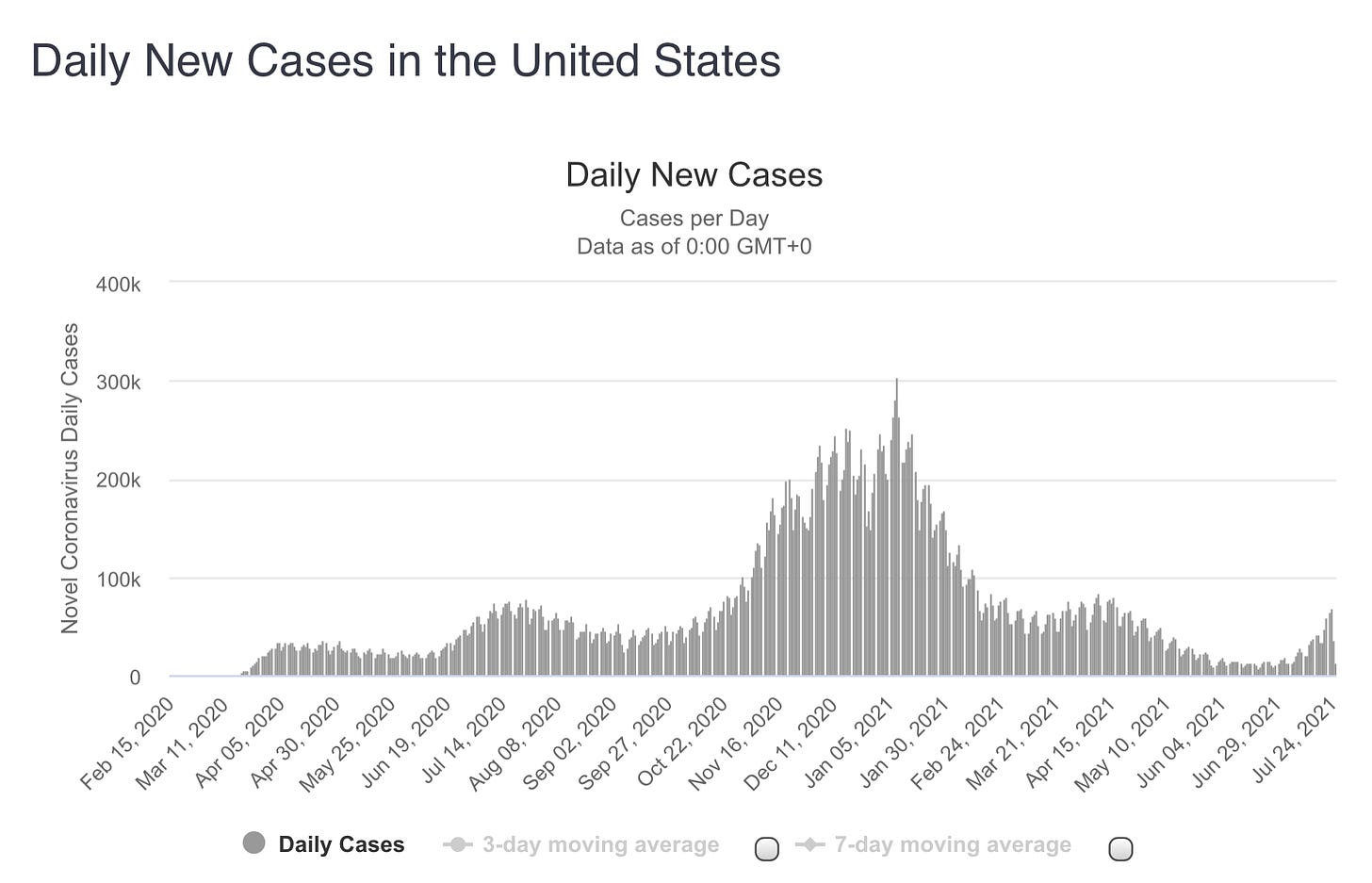Monday Morning News & Notes
Another vaccine in Europe has been approved for use for adolescents
🇪🇺💉
The European Medicines Agency has recommended that the Moderna COVID vaccine be extended for use in Europe among adolescents as young as 12 years old. Moderna becomes the second mRNA vaccine in Europe, after Pfizer, to be recommended for use for children 12 to 17 years old. Moderna held clinical trials involving 3,732 children, which showed its vaccine has the same antibody response to the coronavirus among adolescents as it does among adults.
Side effects were also similar to those among adults but the EMA notes the study had too few participants and “could not have detected new uncommon side effects or estimated the risk of known side effects such as myocarditis (inflammation of the heart muscle) and pericarditis (inflammation of the membrane around the heart).” But, the EMA concludes, the vaccine study found “the benefits in children aged 12 to 17 outweigh the risks, in particular in those with conditions that increase the risk of severe COVID.”
🇩🇰
The Danish National Health Authority is also expanding its vaccination program for adolescents to include the Moderna vaccine. Now, both the mRNA-COVID vaccines can be offered to children as young as 12. Sundhedsstyrelsen says the only difference between the Pfizer and Moderna vaccines is the gap between the first and second dose, with the 2nd Moderna shot coming a week later than Pfizer, three weeks between doses compared to four.
SST Director Søren Brostrøm says there is no mixing and matching vaccines in Denmark between Pfizer and Moderna, with people getting both doses of one or the other.
“We recommend both vaccines equally and without reservation to all target groups in the general vaccination program, including children and adolescents, as well as women who are pregnant or breastfeeding. They are both excellent vaccines that are very well documented, and incredibly safe and effective. Although the two vaccines are very similar, we will not start 'mixing' the two vaccines between the 1st and 2nd doses.”
The National Health Board is updating its vaccine information and education materials to include information on the Moderna vaccine and including it in the program to vaccinate 12-to 17-year olds.
-
While travel-related infections are becoming a concerning issue, it seems some people in Denmark are coming home from abroad knowing full well they are infected. Officially, if you test positive while in another country, you must isolate there and follow the rules of local authorities. But speaking to DR, the Director of the Danish Ministry of Foreign Affairs, Erik Brøgger Rasmussen, says there are people who are blatantly ignoring the rules.
“There are some who, for various reasons, are upset that they have to stay at their destination rather than come home. Some of them have said: 'We do not care what you say, now we are coming home.”
The ministry cannot say exactly how many people are choosing to do this. Figures from the Danish Agency for Patient Safety show that travel-related infections account for almost every fifth infection in Denmark.
-
Germany has expanded travel restrictions impacting Danish travelers from the capital region to encompass all of Denmark. Anyone traveling into Germany from Denmark, including driving across the border or arriving by ferry, must have proof of vaccination, previous infection, or recent negative COVID test. Travelers must also register their entry into Germany at www.einreiseanmeldung.de before arriving. There is a 48-hour reprieve if you go directly into isolation after arriving in Germany.
There are some exceptions. The test and registration requirement does not apply for anyone from Denmark going across the border to do some quick cross-border shopping and coming directly back. Also, for anyone driving through Germany en route to another destination in another EU country.
-
The number of European countries shaded near-normal green continues to contract as Denmark makes more changes to its colour-coded travel COVID risk assessment.
In the EU, both Belgium and France went from green to low-risk yellow over the weekend. This excludes the Belgium region of Wallonia, which remains green, as do the French regions of Val de Loire, Burgundy-Franche-Comté, Normandy, Hauts-de-France, Grand Est, Pays de la Loire, Brittany, Nouvelle-Aquitaine, and Auvergne-Rhône-Alpes.
The Greek regions of Central Macedonia, Western Macedonia, Ionian Islands, Western Greece, Central Greece, and the Peloponnese have also moved from green to yellow, as does the Ceuta region of Spain.
Outside the European Union, Denmark has moved Saudi Arabia to medium-risk orange due it placing significant entry restrictions on travelers from Denmark.
Foreign Affairs Denmark is also reminding travelers, while it does not recommend traveling to Finland, currently shaded orange, the country is easing border restrictions as of today, July 26. Finland is moving to adapt to the EU COVID digital certificate, so restrictions are eased, mostly for fully vaccinated travelers and those who have recovered from a recent infection.
-
Denmark has passed another vaccination milestone, with 50% of the total population now fully vaccinated - 2,939,901 people. For the population 16 years old and older, the fully vaccinated percentage is 60.78%. To date, 4,085,213 1st-dose inoculations have been given (69.8% of the population).
On Saturday, there were 41,544 total vaccinations done as numbers went into the usual weekend slump.
-
In the last three days, Denmark has reported 2,100 COVID infections and had no new coronavirus infections. There were 707 infections reported on Friday, 749 on Saturday, and another 644 on Sunday.
On Saturday, there were 185,220 total corona tests done, 64,947 PCR and 120,273 rapid, for a (PCR only) positivity percentage of 0.99%.
COVID hospitalizations (59) have edged upward (+3) while the number of infected people in a ICU (10) and of those on a ventilator (6) both remain unchanged day to day.
-
After shelving the AstraZeneca COVID vaccine, Denmark offered those with a first dose of AstraZeneca a second dose of an mRNA vaccine, either Pfizer or Moderna. Now, the mixing of vaccines has resulted in a travel headache for some. DR is reporting that several countries only count someone as fully vaccinated when they have had two doses of the same vaccine. For some Danes heading out on summer vacation, this has come as a rude surprise.
Denmark’s National Health Board estimates about 150,000 people in Denmark are impacted. It is now considering whether to offer a 3rd booster shot of the same vaccine those people received as their second dose to try and rectify the situation. It is working with the Danish regions on how best to accomplish this.
-
The Danish Health Ministry has opened up vaccinations for all citizens of the Faroe Islands and Greenland who are in Denmark. Previously, there were some roadblocks, including a having to have been in Denmark for a required period of time. Now, Greenland and Faroe Islands citizens can get the jab in Denmark, just like everyone else. The only requirement is proof of residency “within the commonwealth.” Sundhedsministeriet says in a press release they estimate this edict will open vaccinations up for about 5,500 people in Denmark.
🇸🇪
The Swedish Public Health Agency says infections are rising in Sweden, especially in metropolitan areas. It says nationally COVID infections are “at a low level” but noted there were 1,855 new infections in week 28, which is a 24% increase from the week previous. The agency says the Delta variant is the culprit as it continues to dominate.
Travel-related infections continue to be a growing problem in Sweden. Folkhälsomyndigheten says a full 23% of all new infections last week were linked to travel. It has previously warned of a growing number of COVID infections abroad, especially from people returning from trips to Spain.
At last week’s physicians meetings, it was noted that hospitalizations are stable, but emergency rooms are becoming strained, albeit not at rates seen in previous infection waves. Also, most of the new infections in recent weeks are among those aged 18 to 29 years old.
-
Sweden is discontinuing the use of the AstraZeneca vaccine. The Swedish Public Health agency has restricted use of the vaccine to seniors 65 years of age and older. It says the majority of that age group (89%) are now fully vaccinated and there is no longer much of a demand for the vaccine.
The agency says the Swedish regions can use whatever AstraZeneca doses they have left to finish vaccinations for anyone with a first dose of the vaccine if they don’t opt for Pfizer or Moderna as a second dose. It can also be used for any seniors who have yet to begin the vaccination process. The country’s remaining stockpile of AstraZeneca could be donated to other countries in need, as the Swedish government sees fit.
In Region Stockholm, 82.6% of seniors over 65 are fully vaccinated. Chief Physician Elda Sparrelid says a shortage of vaccine doses meant they could only offer seniors AstraZeneca as a first dose, but that is about to change.
“Soon they can choose other vaccines as the supply has improved and more people have had time to be vaccinated. The number of infected people is now increasing in the region as the more contagious Delta variant dominates. We therefore need to continue to do everything we can so that as many people as possible are fully vaccinated when we enter the autumn so that infections do not get a foothold when schools go back and people return to work.”
She believes that seniors who so far may have been hesitant about vaccination are now rethinking their position and looking to get inoculated.
🇳🇴
Since Thursday’s update, Norway has added 681 new infections and suffered no new coronavirus deaths.
COVID hospitalizations (22) ICU numbers (6) and the number of people on a ventilator (3) are all unchanged day to day.
To date, 62.59% of Norwegians have had one vaccine dose and 32.06% have had both.
🇫🇮
Finland has registered 1,342 new infections over the last three days. It reported 412 new coronavirus cases on Friday, 570 on Saturday, and another 360 on Sunday.
-
As expected late last week, the Finnish government approved reintroducing COVID restrictions on restaurants and bars in five regions of the country. The rules will apply in the regions of South-west Finland, Kymenlaakso, Uusimaa, Pirkanmaa and Päijät-Häme, all of which are deemed to be in an outbreak acceleration phase. Restaurants and bars must stop serving booze at midnight and close by 1am. Capacity is also cut in half, or 50% capacity of a bar’s normal occupancy. Restaurants must reduce customers by one-quarter, with capacity capped at 75%.
Helsinki is also now in the acceleration stage. It has been recommended that indoor private gatherings in the city be limited to no more than ten people.
COVID case numbers in Finland have quadrupled since June. The Finnish Institute for Health also notes the number of people in quarantine has increased to more than 6,000, last week, up substantially from the week previous.
-
As Finland eases border restrictions today, it is preaching caution to residents who might want to jet out for a holiday abroad. The Finnish Institute for Health says it is expecting infections to begin to increase as travel in and out of the country resumes. The health agency says anyone returning from a high-risk country must get a COVID test when arriving back home.
Institute Leading Expert Jari Jalava:
“We know that infections occur at holiday resorts abroad and that passengers arriving in Finland cause further infections here. You should be especially careful when traveling and follow all COVID precautions.”
For tourists arriving in Finland who cannot show proof of full vaccination or recent infection with their EU COVID digital certificate, they must also get tested on arrival. Anyone refusing a test faces a fine.
🇮🇸
On June 26, Iceland lifted virtually every COVID restriction as it celebrated sky-high vaccination rates and low infection numbers. That lasted for almost exactly one month. The country is reintroducing restrictions as infections rise exponentially. As of midnight, July 24 (Saturday) mask-use mandates return, as do social distancing rules, prohibitions on gatherings over 200, and bars and nightclubs will once again have operating hours restricted.
🇪🇸
Spain’s Health Minister says they are seeing the number of coronavirus infections decline. Carolina Darias says “things are starting to go the right way.” The Delta variant-driven infection wave has seen the number of COVID cases increase fivefold in Spain from mid-June to mid-July.
Spain doesn’t report infection numbers on weekends, so we should get a clearer picture of its COVID situation later today.
🇪🇺💉
The European Union Commission said the European vaccination campaign “has accelerated tremendously.” It says, as of July 22, 68.4% of the European adult population now has at least one vaccine dose. There have been 515.8 million total vaccine doses delivered, with 436.6 total inoculations administered.
🇯🇵
Tensions over rising COVID numbers in Japan continue to mount. As the Summer Olympics get underway, there have been demonstrations opposing the games and the infection risk demonstrators say it poses.
🇦🇺
Australia, which once enjoyed near-normal life, is getting hammered by the Delta variant after badly fumbling its vaccination campaign. According to Reuters, only about 15% of Australia’s 25-million population is vaccinated. Stringent restrictions, once the country’s best ally in its fight against the coronavirus, also seem to be no longer working. The Australian state of New South Wales has been locked down for four weeks now and infections continue to head the wrong way. On Friday, it recorded its highest number of new infections in this latest Delta variant-driven infection wave, with 163.
🇿🇦
In a nationally televised TV address, South African President Cyril Ramaphosa said he believes the country’s third infection wave has peaked. He said while some South African provinces are still seeing increasing numbers, the situation has stabilized enough that restrictions can be eased.
Travel between provinces can now resume, alcohol is available in supermarkets again, and restaurants can begin serving booze again. A national curfew has also been pushed back one hour to 10pm.
🇺🇸
As the United States grapples with its vaccination effort running into a wall of vaccine hesitancy and anti-vaccine sentiment its infection curve is bending back upward.
🇨🇦
Yesterday, Canada reported 228 new infections and three coronavirus deaths. These numbers will change a bit when a number of provinces who haven’t reported since Friday table updates later today.
There are already some worrying indicators as COVID cases in both B.C. and Alberta began to increase last week as the Delta variant impact begins to appear.
To date, in Canada, 26,746,362 1st doses (70.25% of the population) have been administered while 20,670,123 people (54.29%) are now fully vaccinated.




